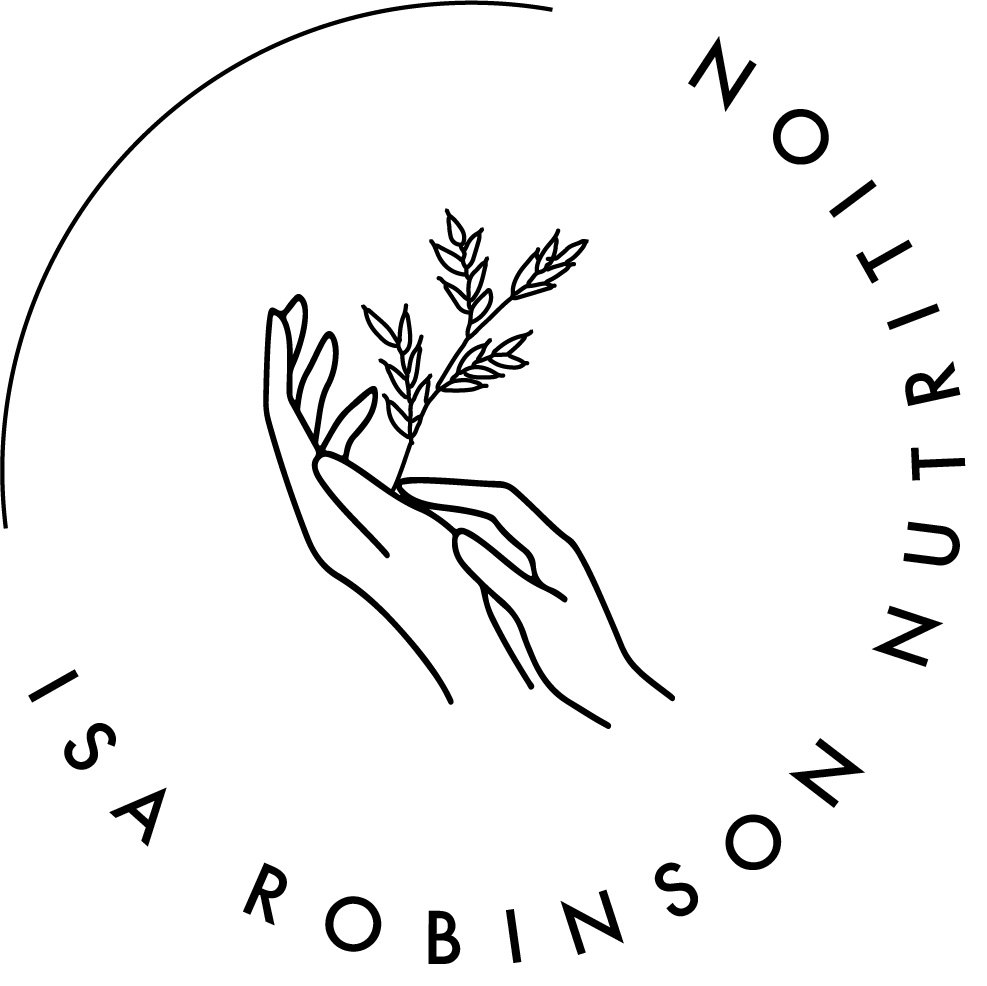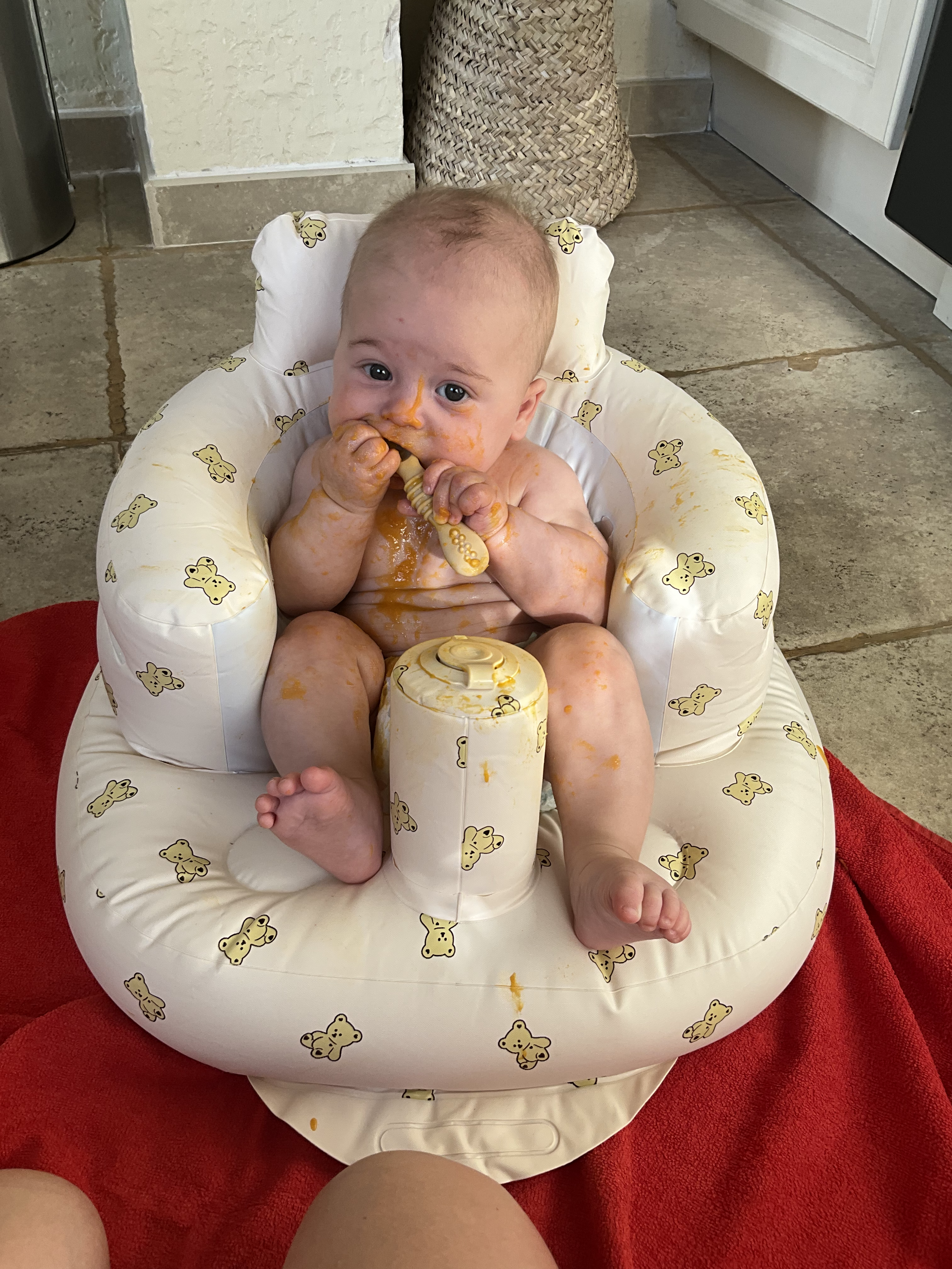What Babies Can Teach Us About Relearning to Eat: Lessons from Weaning for Eating Disorder Recovery
Eating disorder recovery can often be thought of as a return — back to a former self, to how things used to be. And while reflecting on a former or younger self can be helpful, for many it’s not a return at all. It’s something entirely new.
A journey of exploration and self-discovery. A process of re-learning to nourish ourselves entirely with compassion, care, and of course nutrition. It’s reintroducing food all over again, often with uncertainty, initially with a lot of fear and, if we’re lucky, with time, a little joy.
In many ways, this process mirrors something wonderfully human: how we all learned to eat for the first time — how babies learn to eat. Watching my son discover food for the first time through the weaning process has offered some powerful insights into what it truly means to eat freely, without rules, shame, or second-guessing. So with this experience in mind, here are some of what I hope babies can teach us about healing our relationships with food and recovery.
1. Curiosity Before Judgement
Babies approach food with open minds and mouths. They are blissfully unaware of whether a food is deemed “good,” “bad,” “clean,” or “processed.” Their first interaction with food isn’t shaped by fear — it’s shaped by curiosity.
In recovery, we often have to re-learn curiosity. Eating disorders are extremely sneaky at convincing us that we don’t like certain foods, not because we truly don’t enjoy them, but because we’ve been taught to fear them. Recovery invites us to approach food like a baby does: with a fresh mind, and an openness to explore texture, taste, and experience without judgement.
2. Food is Meant to Be Fun
Weaning isn’t neat and tidy. It’s messy, chaotic, and full of delight. There’s red pepper smeared into eyebrows and broccoli between the toes. Babies squash, smear, spit, suck, and taste their way through the process — and no one expects them to get it “right.”
What if recovery was allowed to look like that too? What if relearning to eat could be messy, imperfect, and playful? This doesn’t mean to say you need to end up with an avocado face mask, but there’s no gold star for doing food perfectly. There is, however, healing in learning to connect with food in a way that feels safe enough, and even joyful.
That might mean eating pizza with your hands, laughing as the cheese stretches like silk. Taking a bite of a sandwich so full that the juices ooze out onto your lap. Letting a strawberry burst in your mouth, or chasing a drip of ice cream from the cone before it reaches your hands. Because food was always meant to be a little wild — colourful, imperfect, and alive. And just as babies need a safe highchair to explore their peas and pasta, we too can create our sturdy ground: soft light, a favourite plate, the reassuring company of someone we trust. A space where mess and vulnerability feel welcome, curiosity has room to roam, and eating becomes an adventure again.
3. The Power of Sensory Pleasure
Babies eat because it feels and tastes good. They are constantly exploring and discovering the world through their senses, hence the many recommended baby sensory classes.
The same is true with how they explore food — through sight, smell, taste, and touch, not through calorie counts, macros, or TikTok trends. The crunch, the squish, the warmth, the sweetness — finding pleasure in the full sensory experience is part of the package, not something to be feared.
Diet culture teaches us to suppress or mistrust this kind of sensory pleasure in favour of external means to control and govern our eating. It tells us to eat ‘X’ because it’s “healthy” or to not eat ‘Y’ because it’s processed. It denies us eating just because in favour of what is supposedly “functional,” and so we may miss marvelling at the delight of the snap, crackle, or pop — the tangy, creamy, icy, or comforting.
Reconnecting to the sensory pleasures of food isn’t indulgent — it’s part of how we’re wired to eat. We have to eat to live, after all. Considering the sight, smell, texture, temperature, and taste of food can be a vital step in reconnecting with the body’s natural wisdom and having fun with food.
4. Carbs and Fat Are Not the Enemy — They’re the Foundation
Babies need a diet rich in fats and carbohydrates — the very things diet culture loves to demonise — in order to support growth, development, and brain health, to name but a few. Fat supports neural myelination; carbs provide the energy they need to move, learn, and play.
And here’s the thing: when we’re no longer babies, we still need those things too, but especially in recovery. We need all food groups to strengthen ourselves physically and psychologically, to re-wire the brain, for our hormones, sleep, energy levels, and so on. Proper balanced nourishment isn’t a reward — it’s a requirement.
5. Internal vs External Motivation
Babies eat for intrinsic reasons — because they’re hungry, because something smells good, because they’re curious. They are not influenced by food labels, weight stigma, diet trends, or wellness algorithms. They eat boldly and instinctively.
In recovery, and let’s be honest, for most of us now, the external noise is loud. Reclaiming intrinsic motivation — learning to eat because your body needs it, because it’s hungry (physically or hungry for a particular taste just because — in intuitive eating we call this “taste hunger,” which also needs honouring), because food is pleasurable, because nourishment supports our lives — is an act of healing.
6. You Don’t Have to Love It at First Bite
Famously, babies often need multiple exposures to a food before they accept it — sometimes 10, 15, or even 20 times. Repeated, low-pressure exposure builds familiarity and comfort.
The same is true in recovery. If certain foods have been “off limits” for years, it may take some time — and very likely repeated exposures — to diminish the fear and anxiety the eating disorder has created and fully enjoy that food again.
It can be an easy mistake in recovery to just tackle a fear food once to tick it off the list and decide it’s not for you. However, it may be the fear and anxiety of challenging the eating disorder that leaves a bitter taste, rather than the objective experience of that food. If you’ve avoided something for years, you might not love it straight away — that doesn’t mean you’re doing recovery “wrong.” It means your taste buds, your brain, and your nervous system are slowly relearning safety and neutrality. Strong encouragement to keep going!
7. Remove Pressure and Avoid Comparisons
Babies aren’t expected to get it all right straight away, and they all blossom at different times. On their journey with food, there’s no pressure to “perform” or do things at the same time. It’s developmental, intuitive, messy, and celebrated.
In recovery, the pressure to do it perfectly — to eat the “right” amount, gain weight at the “right” speed, or enjoy every meal — can be overwhelming. But you’re not a robot, you’re a 360-degree human being. Like a baby, you will need nutrition to thrive in life, but like a baby, you also deserve space to move at your own pace, compassion, and patience as you learn to eat in a way that feels safe, nourishing, and free.
Final Thoughts: Begin Again, Gently
If you are in recovery, or supporting someone who is, consider what it might mean to approach food with a little bit of curiosity, play, and care. Think of the baby reaching for a spoon, chewing with abandon, or giggling through their first tastes of whatever it might be. The cool thing is that if you’re reading this, you have been through this process once already, and all that ability, curiosity, freedom, and excitement for learning — or re-learning — to eat still lives inside of you.








